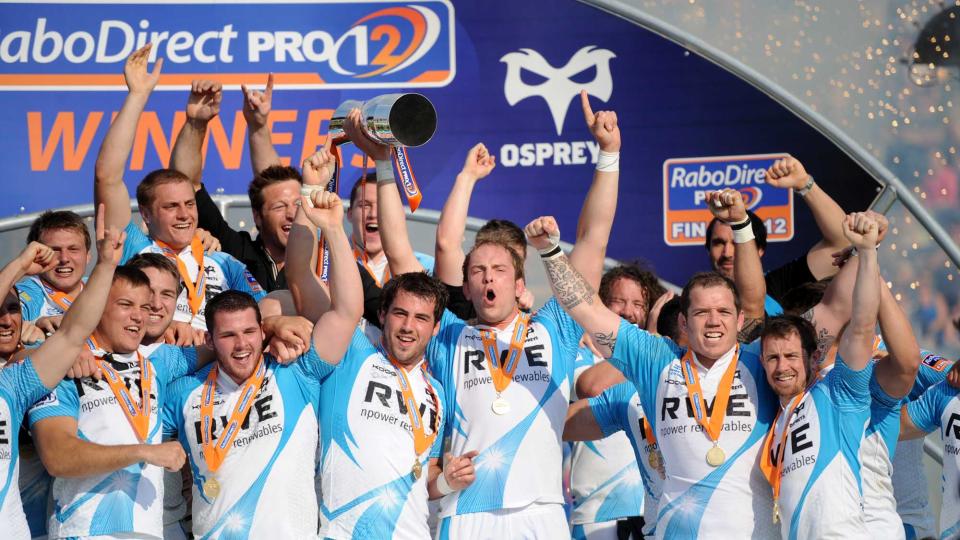Our Story
Founded in 2003 and playing out of the Liberty Stadium in Swansea (now the Swansea.com Stadium), Ospreys have lived a rich, storied history. From remarkable victories to heart-breaking losses, the trajectory of the Ospreys over the last two decades is a sporting tale complete with trials, tribulations, and triumphs.
The Journey Begins (2003-2010)
Ospreys commenced our journey as part of a major restructuring of Welsh rugby by the Welsh Rugby Union (WRU). This initiative saw the merger of nine clubs into five regions, one of which was Neath-Swansea Ospreys. The fledgling team was based on the merger of Neath RFC and Swansea RFC, both boasting distinct and successful histories of their own.
The Neath-Swansea Ospreys debut match was a victory against Ulster on September 5th 2003, igniting a spark of promise for what was to come.
Throughout our first decade, Ospreys enjoyed our most successful era to date as this new team secured four Celtic League/Pro12 titles (2005, 2007, 2010, and 2012). In 2006, the Ospreys became the first of the Welsh regions to defeat a major touring side when they beat Australia, 24-16.
A Golden Generation and Challenges Emerge (2010-2017)
In the early 2010s, the team entered a period of growth and consolidation. Notable players like Alun Wyn Jones, Justin Tipuric, and Rhys Webb rose to prominence, becoming critical parts of the team's success and leading by example in the Welsh national team.
Ospreys secured their fourth Pro12 title in the 2011-2012 season in dramatic fashion after a thrilling encounter with Leinster.
Innovation and the Future (2017-Present)
With tighter restraints in Welsh rugby, Ospreys began to experiment and innovate, changing their coaching staff and focusing on a different recruitment strategy that aimed to bring through younger talent from across the region.
Under head coach Toby Booth who was appointed in 2020, the team began to show real promise. The 2020-2021 season saw the squad finish fourth in Conference A of the newly formed United Rugby Championship, an improvement on the seasons that came before it.
In the 2022-23 season, the Ospreys reached the knockout stages of the Heineken Champions Cup for the first time in 13 years following on from some famous wins in the group stages against the French Champions, Montpellier Herault, and the English Champions, Leicester Tigers.
A quarter final meeting with Saracens saw huge travelling Ospreys support and a spirted performance, but Saracens were able to come away with the win to progress in the tournament. Despite that, Ospreys created some phenomenal memories, including the double over French Champions Montpellier.
The 23-24 season saw defence coach, Mark Jones, promoted into the role of Head Coach of the Ospreys. Since taking the helm, the Ospreys have been recognised for having a compact defence whilst also displaying an "all-court game" in attack, a phrased coined by our current Head Coach.
Under Mark, Ospreys continue to provide the strongest contribution to the Welsh National side, with Jac Morgan and Dewi Lake being named as co-captains for the 2023 Rugby World Cup, and Jac being a key member of the British & Irish Lions side that won in Australia. Ospreys maintain that young players from the region are the lifeblood of the team and we know that our supporters love to cheer on local heroes alongside old favourites
Want to be the first to hear our news as the story continues? Sign up to our newsletter
